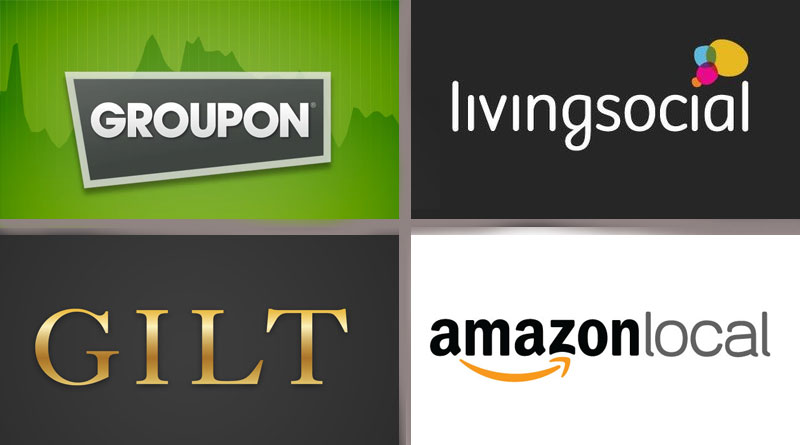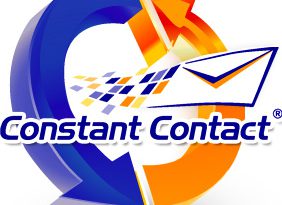Do Daily Deals Damage Your Brand? The Race To The Business Bottom
In the modern retail arena, daily deals abound for nearly everything in retail sales. This includes products and services from haircuts to massages, white goods to car sales. We examine how daily deals change the retail sales market from the three perspectives of the client, the vendor, and the daily deals services themselves.
SECTION 1
Overview: The Daily Deals Business Model and History
 The modern version of the business model for daily deal websites first originated around 2004, with sites such as Woot.com. By 2006, there were over 100 competitors, and 2008 saw the launch of Groupon.com, which soon became the second-fastest online company ever to reach a billion dollar valuation. The concept of this ecommerce model is based on flash sales, where discounts or “deals” are offered for a short time only, usually 24 or 36 hours. Generally, consumers must register for these sites and receive notice of the daily offers over email or social media. These web sites are never run by the vendors themselves, but rather they serve a marketing role by referring users directly to vendors, and then the daily deal company takes a large percentage of the sale price and also retains the customer data for future pitches. In the beginning, some companies operated using group buying formulas, which designated a minimum and maximum number of people who may take advantage of a given offer; a customer’s credit card is only charged when a minimum number of people have purchased a deal. Some companies still make use of this method. The price for the deal is generally a significant discount compared to retail prices, and it is worked out directly between the daily deal company and the retail vendor.
The modern version of the business model for daily deal websites first originated around 2004, with sites such as Woot.com. By 2006, there were over 100 competitors, and 2008 saw the launch of Groupon.com, which soon became the second-fastest online company ever to reach a billion dollar valuation. The concept of this ecommerce model is based on flash sales, where discounts or “deals” are offered for a short time only, usually 24 or 36 hours. Generally, consumers must register for these sites and receive notice of the daily offers over email or social media. These web sites are never run by the vendors themselves, but rather they serve a marketing role by referring users directly to vendors, and then the daily deal company takes a large percentage of the sale price and also retains the customer data for future pitches. In the beginning, some companies operated using group buying formulas, which designated a minimum and maximum number of people who may take advantage of a given offer; a customer’s credit card is only charged when a minimum number of people have purchased a deal. Some companies still make use of this method. The price for the deal is generally a significant discount compared to retail prices, and it is worked out directly between the daily deal company and the retail vendor.
At this time, the major players in the online daily deals market include Groupon, Living Social, Gilt City, Amazon Local, Facebook Deals, and Lifebooker, the last of which focuses on women’s beauty including hair salons, spas, and massages. There are also aggregators for daily deals sites, most notably Yipit which brings together deals from thousands of sources for consumer information. Google had hoped that its Google Offers product would take off, but after five years of it languishing, it was closed at the end of 2013. Groupon had offered five billion dollars to buy out Google’s product, but Google instead chose to reserve the brand and the model for another use sometime in the future.
 The purchase process varies across these different sites, but they generally stick to the limited time only flash-sale model. By comparison, Groupon offers the widest range of discounts, sometimes offering the lowest deals of any site. Living Social has a broader selection in terms of personal care and household offers, as well as dedicated sections for family and travel. Amazon Local thrives in a similar domain to Livingsocial, but their method focuses on one deal at a time. Some vendors are even operating on a v2.0 model, trying to make their business run 100% on daily deals. For instance, Keratinbar in New York City sells only by means of daily deals, and they have priced the product and quality accordingly. Though their revenue is significantly greater than operating without daily deals, their net profit is about the same. Often in these cases of a v2.0 business model, the quality of the product or service must often be lowered to compensate for the rise in revenue and the shortfall in overall profit.
The purchase process varies across these different sites, but they generally stick to the limited time only flash-sale model. By comparison, Groupon offers the widest range of discounts, sometimes offering the lowest deals of any site. Living Social has a broader selection in terms of personal care and household offers, as well as dedicated sections for family and travel. Amazon Local thrives in a similar domain to Livingsocial, but their method focuses on one deal at a time. Some vendors are even operating on a v2.0 model, trying to make their business run 100% on daily deals. For instance, Keratinbar in New York City sells only by means of daily deals, and they have priced the product and quality accordingly. Though their revenue is significantly greater than operating without daily deals, their net profit is about the same. Often in these cases of a v2.0 business model, the quality of the product or service must often be lowered to compensate for the rise in revenue and the shortfall in overall profit.
Summation Points – Overview of Daily Deals
- Daily deals started out in 2004
- Major players vary slightly in approach
- Major players are Livingsocial, Groupon, GILT and Lifebooker
- Google Offers closed in August 2013
- Purchase process varies across these daily deal sites.
- The general model is supposed to bring in new repeating clients, to make up for the loss-leader in the initial offer.
- Some enterprising vendors are operating on a v2.0 model by trying to make their whole business run 100% on daily deals
SECTION 2
How do the Daily Deal Web Sites Fare From The Perspective of the End Customer?
 From first glance, these sites offer great deals for the consumer. The offers on goods and services are much lower than retail prices, and these sites are often the only places where customers can purchase these items at such a low cost. However, there are also some drawbacks. For instance, only a limited type of retailer will partake in these offers. These are often new businesses, which may be hit or miss in terms of quality, or alternately businesses desperate for sales, which do not necessarily bespeak a high quality of product, moreover desperation for sales. Furthermore, the daily deals model can lead to confusion about timing for reaping the benefits of a given offer. There are only small windows of opportunity to buy, with many deals lasting just a few days. This limits a customer’s ability to take advantage of a deal that they learn about, for example, by word of mouth, because by the time they go to find the deal online, it may no longer be available.
From first glance, these sites offer great deals for the consumer. The offers on goods and services are much lower than retail prices, and these sites are often the only places where customers can purchase these items at such a low cost. However, there are also some drawbacks. For instance, only a limited type of retailer will partake in these offers. These are often new businesses, which may be hit or miss in terms of quality, or alternately businesses desperate for sales, which do not necessarily bespeak a high quality of product, moreover desperation for sales. Furthermore, the daily deals model can lead to confusion about timing for reaping the benefits of a given offer. There are only small windows of opportunity to buy, with many deals lasting just a few days. This limits a customer’s ability to take advantage of a deal that they learn about, for example, by word of mouth, because by the time they go to find the deal online, it may no longer be available.
In addition, there is a confusing myriad of choices on daily deals sites, specifically for certain categories such as beauty or travel. It often requires cross referencing between these daily deals sites as well as other sites such as Yelp.com in order to distinguish the best deal in terms of both price and quality from the large number of other choices. In this regard, there is a lack of “high quality” brands at a discount, and it is difficult to tell when a brand is worth the investment, even if the price is lower than other non-offers out there. Finally, the method of alerting customers to deals by means of email or social media can be overwhelming, as a regular user of these sites may often be drowned in a flood of email pitches alerting them to deals. This problem is alleviated by aggregator sites such as Yipit, but not very many customers have heard of these sites compared to individual sites like Groupon or Livingsocial, which have developed greater customer loyalty.
Summation Points – From The End Customer Perspective
Benefits:
- Great deals and offers on goods and services
Drawbacks:
- Only new (or vendors desperate for sales) will partake
- Small windows of opportunities to buy, many deals last just a few days
- A confusing myriad of choices of daily deal websites
- Lack of “high quality” brands at a discount
- Overwhelming amount of email pitches, most sites send a daily deal email, users “drown” under quantity of email pitches.
- Deal aggregator sites not yet popular
SECTION 3
What About From the Perspective of the Retail Vendor?
 From the standpoint of the retail vendor, these sites are thought to help grow or sustain their business by building brand loyalty as well as quickly selling surplus inventory. Indeed, there is the benefit of allowing the vendor to off-load inventory. Furthermore, the business model can be perfect for companies looking to launch a new business or product, as this is a direct marketing resource where proven consumers will be able to see the deal offers. The theory of developing brand loyalty and building more long-term consumers, however, is more in question. Actually, use of these sites may lead to long-term brand damage, because once a deal has been offered, it is more difficult for consumers to want to pay full price ever again. For example, the Museum of Sex in New York City has a normal admission price of $18, but offered $5.00 admission tickets on the Living Social website. After the promotion had ended, it became clear that any customers were no longer interested in paying the full price of $18 to get into this popular attraction. Even if the deal is no longer available, consumers are seen to just wait until the next deal is available again before making their purchase. Sometimes waiting so long, in fact, that they never go unless there is a discount deal. The Museum of Sex is no stranger to the daily deal model, with a litany of offers with many deal sites, ensuring no-one will ever pay retail again. The question remains, if no-one ever pays retail, then is the true price of their product only $5, but everybody is sold on the idea that is in fact much higher and it will always be discounted? Museum of Sex has made it clear that their goal this year is to drive over 150,000 people through their doors, at any cost. They are well on their way to achieving that goal through their relentless discounting through the daily sites, without any apparent damage to the brand. Its unclear if a brand can jump from being the daily-deal-darling to an established brand, as very few businesses have jumped the gap. From empirical evidence, it appears that going daily-deal, means that you might not be able to go back.
From the standpoint of the retail vendor, these sites are thought to help grow or sustain their business by building brand loyalty as well as quickly selling surplus inventory. Indeed, there is the benefit of allowing the vendor to off-load inventory. Furthermore, the business model can be perfect for companies looking to launch a new business or product, as this is a direct marketing resource where proven consumers will be able to see the deal offers. The theory of developing brand loyalty and building more long-term consumers, however, is more in question. Actually, use of these sites may lead to long-term brand damage, because once a deal has been offered, it is more difficult for consumers to want to pay full price ever again. For example, the Museum of Sex in New York City has a normal admission price of $18, but offered $5.00 admission tickets on the Living Social website. After the promotion had ended, it became clear that any customers were no longer interested in paying the full price of $18 to get into this popular attraction. Even if the deal is no longer available, consumers are seen to just wait until the next deal is available again before making their purchase. Sometimes waiting so long, in fact, that they never go unless there is a discount deal. The Museum of Sex is no stranger to the daily deal model, with a litany of offers with many deal sites, ensuring no-one will ever pay retail again. The question remains, if no-one ever pays retail, then is the true price of their product only $5, but everybody is sold on the idea that is in fact much higher and it will always be discounted? Museum of Sex has made it clear that their goal this year is to drive over 150,000 people through their doors, at any cost. They are well on their way to achieving that goal through their relentless discounting through the daily sites, without any apparent damage to the brand. Its unclear if a brand can jump from being the daily-deal-darling to an established brand, as very few businesses have jumped the gap. From empirical evidence, it appears that going daily-deal, means that you might not be able to go back.
The daily deal sites also have the drawback of being quite expensive. First, the vendors are asked to lower their prices substantially, with the daily deals site pushing for deeply discounted prices, as it is thought only “deep” discounts make customers interested in daily deals. On top of this, the middleman site takes a large cut of their profits, and these commissions can be as much as 50%. These commissions are negotiated individually with businesses. Sometimes this can work as a loss-leader strategy, whereby customers are wooed with a low price, so low that the company may even incur a loss, in order to gain long-term customer loyalty; however, this can just as often backfire. There can be long-term brand damage, and the companies can fail to convert a discount buyer to become a full price buyer after the offer is over. In fact, the reverse conversion can exist, where full price buyers are converted to discount buyers, thereby cannibalizing full price sales for discounted sales. Most customers would be more likely to move on to the next discounted offer instead of staying with the first brand they have sampled. Some brands, such as Broadway shows, are a “one time only experience.” Therefore, this strategy is particularly flawed in such cases, as there is no opportunity to convert them to full price buyers. Most people will only be going to the show once, as the Broadway League indicated in their 2013 annual report on the industry where they indicated that on average 97.2% of the audience of a particular show is seeing it for the first time.
Summation Points – Retail Vendor Perspective
Benefits:
- Sell large amounts of inventory
- Perfect for launching a new company or product
- Supposed to develop brand loyalty and get new customers
Drawbacks:
- It’s expensive – Groupon can charge up to 70% of the sale, but can vary by industry depending on the profit margins
- Long term brand damage
- Failure to convert discount buyer to full price buyer after offer is over
- Reverse conversion exists – converting a full price buyer into a discount buyer, thereby cannibalizing full price sales for discounted sales
- Most customers move on to the next offer instead of staying with the original brand
- Some brands, products or services are “one time only experience”, EG Broadway Shows, there is no opportunity to convert them into full-price buyer as people will only be going to the show once.
SECTION 4
What About the Perspective From The Daily Deals Site Themselves?
 Daily deals sites have found for themselves a cushy business model, as they can earn quick revenue through their high commissions and group buying models. Furthermore, they have a very low cost structure, as no brick and mortar offices are required for their online-only business. The idea of a deal lasting only one day can also be addicting for consumers, as they will be continually driven back to the site to see the newest daily deals. The email model is also very smart, as even if only one deal is offered over email, it will lure the customer to check out all the present daily deals on the site through a simple click-through layout. Furthermore, the daily deals sites incur basically no risk, as they are commission based. As long as they take care of marketing and price negotiation with the companies, they can create a large inventory of deals to create a large base of customer support. Finally, it is the daily deals company, not the vendor itself, that ultimately get to keep the customers’ data. This data cannot be underestimated in terms of value in this age of online marketing, as a simple database of names, email addresses, and purchase history can be a goldmine.
Daily deals sites have found for themselves a cushy business model, as they can earn quick revenue through their high commissions and group buying models. Furthermore, they have a very low cost structure, as no brick and mortar offices are required for their online-only business. The idea of a deal lasting only one day can also be addicting for consumers, as they will be continually driven back to the site to see the newest daily deals. The email model is also very smart, as even if only one deal is offered over email, it will lure the customer to check out all the present daily deals on the site through a simple click-through layout. Furthermore, the daily deals sites incur basically no risk, as they are commission based. As long as they take care of marketing and price negotiation with the companies, they can create a large inventory of deals to create a large base of customer support. Finally, it is the daily deals company, not the vendor itself, that ultimately get to keep the customers’ data. This data cannot be underestimated in terms of value in this age of online marketing, as a simple database of names, email addresses, and purchase history can be a goldmine.
Still, like any business model, there are some drawbacks. The barrier to entry is so low, that anyone can replicate the model. It is for this reason that there are so many daily deals sites at the moment. This can lead to diminishing returns, as customers may feel that there might always be a better deal out there, and will be even more reluctant to settle for an already low price. It is only sites that have truly built customer loyalty – such as Groupon and Living Social – for which there is a chance to outshine the large group of competitors that have arisen in recent years.
Summation Points – From the daily deal promoter perspective:
Benefits:
- Earns quick revenue for the daily deal site
- Low cost business model, no brick and mortar offices required.
- Drives customers back for the newest daily deals
- Keep customer data
- No risk as it commission based
Drawbacks:
- Barrier to entry is low, anyone can replicate the model – which is why there are so many daily deal websites now.
SECTION 5
Conclusion: Using Daily Deal Websites May Damage Your Brand and Also Change Your Overall Business Model
 Therefore, though the vendor or brand owner can sell significant inventory through the daily deal mechanism, it will ultimately damage their brand in the following ways. First, it will create a new set of client expectations. If a widget that was once sold for $100 is now available for $50, then that will be the new price that the customers will expect before they buy next time. Any attempt to sell it once again at $100 will ultimately fail, as the customer has been primed to expect the product at a lower price. On top of this, the daily deals site will take a commission from the sale, so if that commission is 50%, then the retail vendor will only be receiving $25 in revenue for a product for which they once received $100. Furthermore, regular use of daily deals sites can actually increase the costs for vendors, as it requires more manpower to process daily deals sales than regular sales. This is fine if the sales staff have available clock-cycles, but in many cases it requires additional staff to counter the increase in overhead.
Therefore, though the vendor or brand owner can sell significant inventory through the daily deal mechanism, it will ultimately damage their brand in the following ways. First, it will create a new set of client expectations. If a widget that was once sold for $100 is now available for $50, then that will be the new price that the customers will expect before they buy next time. Any attempt to sell it once again at $100 will ultimately fail, as the customer has been primed to expect the product at a lower price. On top of this, the daily deals site will take a commission from the sale, so if that commission is 50%, then the retail vendor will only be receiving $25 in revenue for a product for which they once received $100. Furthermore, regular use of daily deals sites can actually increase the costs for vendors, as it requires more manpower to process daily deals sales than regular sales. This is fine if the sales staff have available clock-cycles, but in many cases it requires additional staff to counter the increase in overhead.
Finally, it is undeniable that in many cases, use of daily deals sites can devalue a company’s overall brand, leading to lower sales on other non-associated products. This would be akin to Prada offering a discount on just one model of handbag in their line and then seeing lower sales on the other luxury product lines, because the whole brand was sullied by the discounting. Once someone knows they can get a Prada bag for a certain price, then that will be an incentive to only buy the cheaper option, leading to lower sales for the brand as a whole and a loss of the brand-loyal customer as they can no longer support the brands image as it heads for the hills. As far as Broadway shows are concerned, though full price tickets are often sold for $125, available discounts will make theatregoers believe they can get a better price, or they will choose to attend a show for which discounts are available over more in-demand fare. Though Broadway is an industry that has long offered discounts – from the TKTS booth, to direct mail offers, to email blasts – none of these mechanisms have such high visibility along with such high costs, devaluing the brand in the mind of consumers while also taking a major toll on potential revenue to producers. And lets face it, a Broadway show is one time experience, so you will not be getting this customer back.
Daily Deals – Conclusion Section Summation:
The vendor or brand owner can sell significant inventory through the daily deal mechanism, but will ultimately damage their brand in the following ways:
- The will create a new client price expectation. If the widget was sold for $50 instead of $100, then this will be the new price that clients will expect before their next purchase. Any attempt to sell it at $100 will ultimately fail, as the customer has been primed to expect the product at the lower price.
- Increased sales costs. It requires more manpower to process daily deals sales, than a regular sale – this is fine if sales staff have available clock-cycles, but additional staff is required in many cases to counter the increase in overhead.
- Devalue the overall brand, leading to lower sales on other non-associated products.This would be akin to Prada offering a discount on only one type of handbag and then seeing lower sales on the other luxury product lines.
SECTION 6
Epilogue – How Do Daily Deals Damage Your Brand And What Are The Alternatives?
The use of daily deal websites is a great marketing plan for short-term tactical sales, but a terrible model for a long-term strategic marketing approach. This situation has many parallels to the well-known business school staple: “When strategic business decisions are made by tactical managers” – which discusses how managers and other decision makers in modern business do not have the luxury of taking long term views, instead anticipating that they will be working for another company long before any of the effects of their strategic business decisions take root in the present. If they do happen to stay longer-than-expected, no one will remember that is they who opted to discount the brand. For managers immediate professional success, tactical decisions will almost always win out over long-term strategic decisions. Therefore, established companies should think at least twice when considering using a daily deals website to promote their product, as the decision may have poor long term effects for their business and their brand in the minds of consumers for a considerable amount of time. Management and employees know that modern business has very short memories and long gone are the days when employees actually anticipated getting a gold watch for their retirement.
So, who should use Daily Deals? New companies and brands dying-on-the-vine should go hell-for-leather and try to kick start sales to establish (or re-establish) their business. For existing brands, daily deals will give them an opportunity to turn existing brand loyalty into cold, hard sales, even though it means long-term sales may be cannibalized, but that might be OK.
A great example of the cash-out model is the Vidal Sassoon takeover (that was ultimately purchased by Proctor and Gamble), who were sued by Vidal Sassoon himself in 2003 for breach of contract and fraud. Vidal alleged P&G neglected the marketing of his brand name in favor of the company’s other hair product lines, such as Pantene. Proctor and Gamble clearly had no intention of growing the Vidal Sassoon line and began to cash out its high-end image. Vidal won an undisclosed amount, but referred to the whole takeover experience in his bio-doc as “The worst decision I ever made” Vidal died shortly after the documentary was aired in 2012.
Critical thinking and empirical evidence has determined that deals and offers should promote new sales but must not cannibalize existing sales or damage the overall brand. It’s a bold statement, but it rings true to so many marketing professionals, but when their clients are clamoring for increased sales, daily deals are a mighty attractive quick-fix.
Alternatives to daily deal public sites are the use of private, finite environments for offers that don’t leak to the open market, but develop new sales leads that would have gone untapped. Although an offer can still sell well, using this environment keeps the offer exclusive and does not steal sales away from what-could-have-been full-price sales in the public sector. These types of private services include Plum Benefits, Corporate Offers and Working Advantage, all of which are established private environments that provide corporate employees access to employee-only offers.
Other solutions include using the brands existing customer base and providing those customers an offer as a reward for loyalty. This reward should only be available to them and the use of one-time-use discount codes are appearing, thereby securing the offer and limiting leakage. The problem with this strategy is that this may cannibalize existing sales. Lowering available inventory and quality of the product (E.G Offering tickets to the less-than-stellar seats at a discount) are also ways to counteract the risk of converting existing sales. The existing customer will come looking for the discount, find the offer less attractive, but stay to buy the full-price offering in order to secure a premium experience of something that they are already familiar with.




